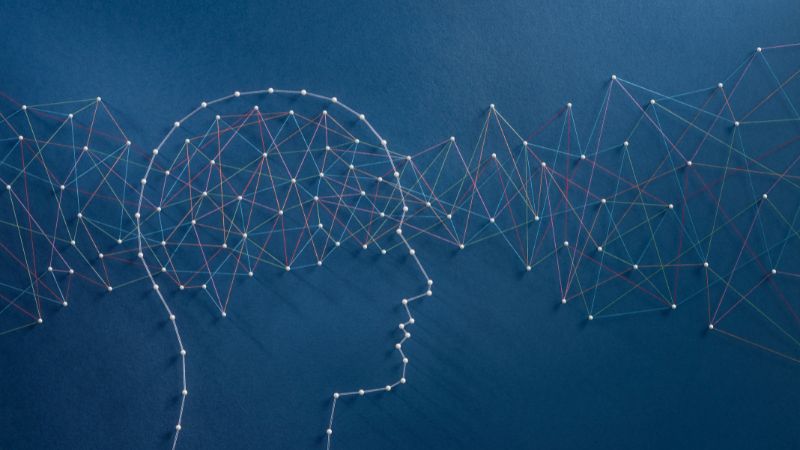READ TIME: 11m
DR JOHN DEMARTINI - Updated 1 year ago
In all likelihood, you have experienced times in your life when you’ve been confronted by challenging situations and were uncertain as to which way to turn or how to proceed.
As such, I’d like to spend some time exploring the process of decision-making, and steps you can take in case you would be inspired to make wiser, more objective and less reactive decisions going forward.
Let’s first take a moment to discuss two key parts of your brain.
You have two basic levels of brain function.
- Your lower level of brain function emanates from the subcortical region of the brain which includes the amygdala (sometimes referred to as the “desire center”). This part of your brain is designed for SURVIVAL or “systems 1 fast thinking”.
- The more advanced higher level of brain function emanates from the medial prefrontal cortex (sometimes referred to as the “executive center”). This part of your brain is for THRIVAL or “systems 2 slow thinking”.
Systems 1 thinking is for emergencies and survival. For example, when trying to avoid predator or catch prey.
Systems 2 thinking is for longer-term planning and executing plans.
When confronted with decision-making, and based on your balanced or lopsided perceptions, objectives or fantasies, congruent or incongruent goals, you will use one or a whole sequence of areas.
In other words, you may use the subcortical amygdala or the executive center, or a combination of the two. In most cases, there’s a gradation, much like a dimmer switch, as opposed to the two seek or avoid extremes.
In situations where your perceptions are highly polarized, in other words where you perceive way more advantages than disadvantages, or way more disadvantages than advantages, you'll likely use systems 1 thinking. As such, you’ll tend to react immediately based on a subconscious decision to avoid one thing and seek the other.
Almost every amygdala based decision you make is based on what you believe will give you the greatest advantage over disadvantage and the greatest benefit over drawback.
When you do that, you may later discover that your initial reaction didn’t quite capture all the possible responses, repercussions and consequences you may face after making that decision.
For example, investing in something everyone else seems to be investing in, only to have the market crash. This is a good example of systems 1 thinking with its subjective bias that something has more positives than negatives or more upsides than downsides.
Think of systems 1 thinking in this way, if you will, by comparing human beings with animals in the wild.
When you see something that you seek (prey) that you perceive has more advantage than disadvantage, the subcortical amygdala distorts what's going on with a false positive in order to flood your system with adrenaline so you can capture it.
In other words, you behave impulsively in your pursuit of immediate gratification.
On the other hand, when you’re resentful of something that represents a predator to you, and you perceive more downsides than upsides, that same amygdala with its subjective bias creates a false negative that there are more negatives than positives – again to kick up the adrenalin.
In other words, you skew your perceptions of reality with your subjective biases.

The most likely result is that you impulsively seek or instinctively avoid things, and make quick amygdala-related decisions as a result.
In most cases, you will likely face the consequences of those quick decisions at a later stage because you didn’t consider that there are TWO sides to every experience.
There are no one-sided experiences, events or individuals.
I once asked the CEO of a large financial company what his process was around ensuring that the majority of his decisions were the ‘right’ ones. His response was that he doesn’t necessarily make the ‘right’ decision. Instead, he makes a decision and, if needed, does whatever it takes to make it so-called ‘right’. So, sometimes he makes the ‘right’ decision, and other times he makes the decision ‘right’. Of course what is ‘right’ or ‘wrong’ is not universally objective, only individually, transiently, and subjectively decided.
He went on to explain that every decision you make has a pair of opposites – both advantages and disadvantages. As such, once he identifies the advantages of a potential investment, he looks for the potential disadvantages so he can mitigate what he can and prepare for them in advance. In that way, he has more certainty in his decisions and ultimate actions.
You can be certain that there will be two sides. In the same way that there is no such thing as a one-sided individual – every individual and every event has two sides.
So, when making an impulsive decision, you tend to overlook things with a subjective bias and have a:
- Confirmation bias on the positives,
- Disconfirmation bias on the negatives,
- False positive on the positives, and
- False negative on the negatives.
As a result, you have a skewed and distorted perspective. You may make a quick decision that you perceive to be made with supposed certainty, but it’s highly likely to be an immediately gratifying impulsive decision, as opposed to one that is careful, considered objective, balanced and neutral.
Some individuals refer to decisions such as these as their “gut impulse or gut instinct”, which they use interchangeably with “intuition”. However, your gut impulse and instinct are a result of systems 1 thinking, while your intuition is associated with the more governed systems 2 thinking.
Gut instinct initiates a survival reaction. It stems from the amygdala and gut brain causing an avoidance of something you perceive to be a predator.
For example, you may meet an individual and have an immediate “gut instinct” to avoid them. This is because every experience that you perceive in an imbalanced way is stored in your subconscious mind. These reverberate in your brain as noise and initiate subconscious impulse reactions towards and instinct reactions away from things or individuals.
As such, you may think you made a wise and balanced decision, but your gut instinct makes you emotionally react to this individual as a result of your previously stored imbalanced associations stored in you subconsciously mind.
In these instances, it’s less likely to be a truly conscious decision and more likely to be a reaction to subconsciously stored information.

The executive center or systems 2 thinking is more governed and objective.
Objectivity means more neutral and balanced in thinking; subjectivity means biased, partial, incomplete awareness, and polarized thinking.
When you're more objective and rational, you're more likely to see both sides.
Systems 2 thinking helps you transform immediate gratifying fantasies that you perceive may give you all positives without negatives into more objective thinking. Your cortical executive center sends nerve fibers down into the subcortical amygdala to calm down your subconscious impulses and instincts.
As I mentioned earlier, this happens like a dimmer switch to create balance instead of the two extremes of ON or OFF. As such, it helps you move from the extreme, which is for survival, into a more balanced state where you are able to see both sides, which is for thrival.
An amygdala response can be highly effective for survival if you’re in danger of being hit by a car. However, 99% of your life’s decisions don’t revolve around avoiding being hit by a speeding vehicle.
Many individuals, however, live their lives in this constant state of fight-or-flight, impulse or instinct, knee-jerk reactions, which is not the wisest way to live if you would love to master your life.
Learning to move from amygdala responses to executive center responses takes practice. A wise place to start is identifying, and living congruently, with your highest values.
Every human consciously or unconsciously lives moment by moment by a unique set of priorities or values - things that are most to least important in their life.
This set of values, or hierarchy of values, is fingerprint specific. No two individuals have the same set of priorities.
Whenever you do something that is high on your list of values and high in priority, the blood, glucose, and oxygen goes into the forebrain, the executive center, and not the subcortical amygdala and lower hindbrain.
Therefore, living by priority or living congruently with your highest values means that you are more likely to make an objective decision and less likely to emotionally or subconsciously react.
In these instances, you are also more likely to have certainty that there are two sides, and that a one-sided outcome is not going to happen. This may be contrary to what you have been taught or told by preachers, teachers, parents and other leaders who have led you to believe that one-sided events or individuals are possible. But those are just fantasies or illusions.
When you live congruently with your highest values, you also become more authentic
As such, you are less likely to inject the values of other individuals – what you perceive you “should”, “need to”, “ought to” or “must” do, which may confuse you and cloud the clarity of your own mission and vision.
I believe that many of your subjective biases likely come from your confusion and internal conflict around what’s truly valuable to you and what you've injected from other individuals about how to fit in.
You may also fear being rejected and so may confuse and cloud yourself by trying to fit in. In this instance, you are less likely to have certainty around your decisions because they are likely not coming from systems 2 thinking or governed by your executive center.
However, if you live by priority, you are more likely to make spontaneously inspired actions with objectivity from the executive center in your forebrain. As such, you will tend to have an inspired vision, plan strategically, execute the action steps towards it, mitigate risk, calm down and govern any impulses and instincts, and make the wisest decisions or spontaneous actions because you are aware of both sides and prepared for both sides.

A true master is the one who embraces both sides, prepares for both sides, mitigates the so-called risks, and calms down the so-called emotionally exaggerated rewards.
At times, you may be blinded by what you perceive to be a reward, only to later discover risks or downsides. Other times, you may not see the opportunities and benefits in the so-called risks.
Our maximum growth occurs at the border of support and challenge, reward and risk, ease and difficulty, positive negative, pleasure and pain. That's why we have both in life.
You are highly unlikely to have certainty in your decisions when searching for a one-sided world.
I commonly state that depression is a comparison of your current reality to a fantasy you're addicted to – a one-sided monopole idea about how life's “supposed” to be. The most depressed individuals I know are individuals who are looking for fantasies and a form of one-sided happiness.
If you have an expectation of both sides, are prepared for both sides, and get both sides, you tend to love both sides, and grow. Then, you are more likely to act out of wisdom and have certainty about your actions because you can be certain that there will be two sides.
To Sum Up:
If you would love to make wise decisions with certainty, it is wise to set an objective that comes your executive center, and that happens maximally when you're living congruently with your highest values – what it truly most important to you.
I'm a firm believer in taking the time to go after what you really love in life, and what's really priority in your life. In my signature program, the Breakthrough Experience, I teach individuals how to:
- Identify their highest values
- Prioritize their life
- Set real objectives
- Have more certainty in life
- Be more present in life
- Have more gratitude, love, inspiration and enthusiasm
I also teach individuals how to transcend the subcortical amygdala's response, unless it's really needed. There are times, for example when a car's about to hit you, that you need to jump out of the way, but 99% of your life is not jumping out of the way of a car or running away from a lion.
Your IQ and our EQ, your intelligent quotient and emotional quotient, are based on how well you listen to your executive center, not amygdala. The amygdala is where you have the lowest IQ, the lowest abstract understanding, the lowest governance, and the most subjectively biased emotional reactions.
The executive center governs, regulates and calms the amygdala and its impulses and instincts, so you are able both to have certainty that you are making the wisest decisions or more inspired actions.
Are you ready for the NEXT STEP?
If you’re seriously committed to your own growth, if you’re ready to make a change now and you’d love some help doing so, then click on the LIVE chat button bottom right of your screen and chat to us now.
Alternatively, you can book a FREE Discovery call with a member of the Demartini Team.
Interested in the Breakthrough Experience seminar?
If you’re ready to go inwards and do the work that will clear your blockages, clarify your vision and balance your mind, then you’ve found the perfect place to start with Dr Demartini at the Breakthrough Experience.
In 2 days you’ll learn how to solve any issue you are facing and reset the course of your life for greater achievement and fulfillment.
Click HERE to find out more
Important Notice:
The content shared in this blog is for education and personal development. It is not intended to diagnose, treat, cure, or prevent any psychological or medical conditions. The information and processes shared are for general educational purposes only and should not be considered a substitute for professional mental-health or medical advice. If you are experiencing acute distress or ongoing clinical concerns, please consult a licensed health-care provider.
Read full disclaimer HERE









